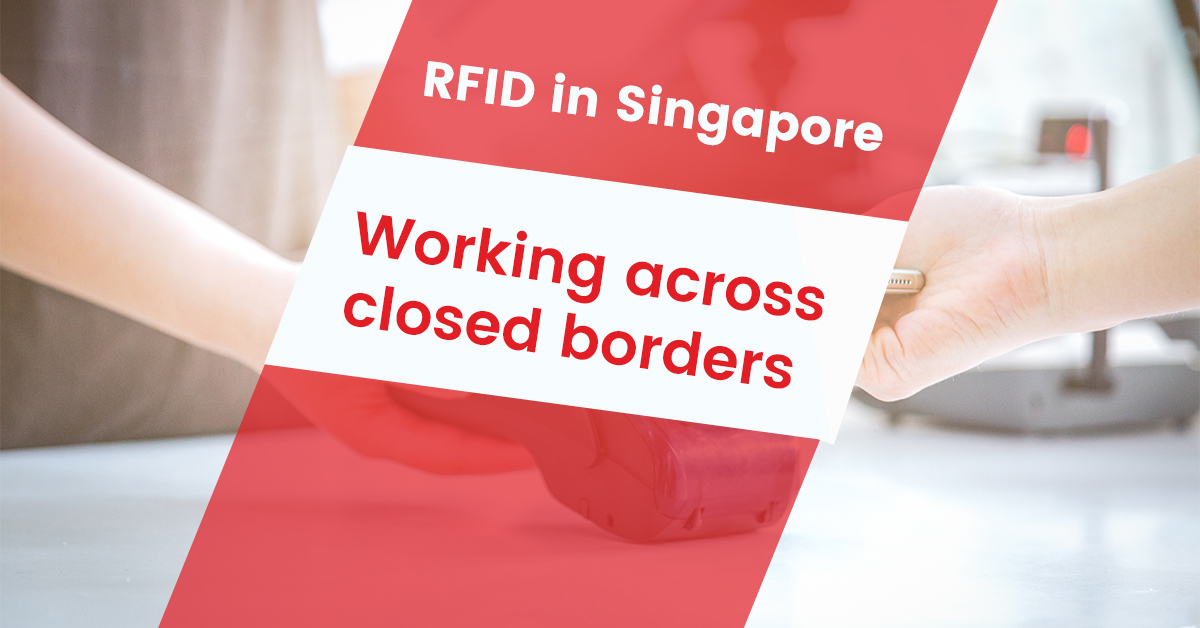Blog on RFID Technology and IoT Solutions
Blog Home

RFID in Singapore – Working across closed borders
29 September 2021By Anuraag Bhatnagar
The last two years have been tough for organizations with a global presence. They relied on talent across multiple countries to deliver business. Singapore has been no exception. Pre Covid, it was an accepted norm to have people coming in for a short duration to support ongoing projects. Not only did it deliver the projects, but it also helped in providing onsite training to local teams. Delivery models of many companies especially the ones with significant service content as part of the deliverables felt the pinch.
The effect of this was especially hard in the first circuit breaker with a freeze on cross border travel. Projects delays got hidden behind the fact that circuit breakers also impacted customer organization. However, the contracts had to be honoured and customer targets met. Importing hardware was a challenge due to limited flights but, Service delivery became a lot more challenging. It was a problem that threatened business & operations continuity.
That is when we had to go back to our virtual drawing boards and re-imagine the service delivery model. We challenged the accepted norms. Nearly two years hence, we can say that we managed to honour all our commitments and continue to deliver for our customers. The plans of localization are still active but will take time since Singapore borders are still restricted and it will be time before New Normal comes into place. We share with you some of the initiatives that we put in place for business continuity.
Local partner ecosystem- We developed partners across countries with complementary capabilities. We trained them remotely with our centralized pool of resources. We transferred onsite responsibilities to them with online expert monitoring during execution. It required a few trial runs but eventually worked out well. This model was effective not only for Singapore but for other countries in the region too. In 2 years, we have expanded this model to a few more countries across the Asia Pacific and beyond. Partner development will be a key strategy in New Normal too. It was a win-win for the customer, partner and Intellistride. Creating a Partner ecosystem not only helps deliver but it also brings in local value add and nearness to end customer.
Technology – The explosive rate of technology adoption for day-to-day business certainly played some part. Ability to seamlessly combine remote tools such as virtual meetings, Video calls, Audio and video tutorials, centralized monitoring systems, cloud infrastructure helped the remote and onsite team to collaborate efficiently and in real-time. There are still more technologies that we have not explored yet, but they are in the pipeline for a better user experience. We expect them to further enhance our remote capabilities.
Digital Business Model: We also took this opportunity to move our operations onto a digital platform. Instead of relying on phone calls and emails, we got our operational teams onto a digital platform which not only reduced the number of coordination issues but also enhanced the customer services experience as information is now available at the fingertips. The success here encouraged us to move on to the next phase of developing a digital platform.
Training and new product introductions – In times of crisis training take a backseat as most companies tend to pull back on training costs. We on the contrary utilized the downturn in business volumes to revamp the team with new capabilities and enhance existing ones. This helped us with a wider base of experts to train our onsite partners. Reduced travel not only allowed us to bring structure to the existing product portfolio but also develop new products in line with new realities.
As someone said let us not waste a crisis. This is what we did. While close-downs, circuit breakers, lockdowns have brought their own challenges it has also opened up possibilities for innovating in Service delivery. We believe in finding solutions for challenges and innovate in the process.
search
sort by
category
- All
- Cold chain monitoring
- Intelligent Transportation Systems
- IoT
- IoT in agriculture
- IoT solutions
- RFID
- RFID for 3PL Providers
- RFID for Inventory Tracking
- RFID for Personal Tracking
- RFID For Vehicle Tracking
- RFID in Laboratory Inventory Management
- RFID label tag
- RFID solutions
- RFID Solutions in Construction
- RFID System
- RFID Tags for Asset Tracking
- RFID Technology
- RFID Technology in Food Industry
- RTLS Technology
- Smart Traffic System
- supply chain
- Track&Trace solutions
- Uncategorized
- Intellistride.com
- Blog
- RFID in Singapore – Working across closed borders